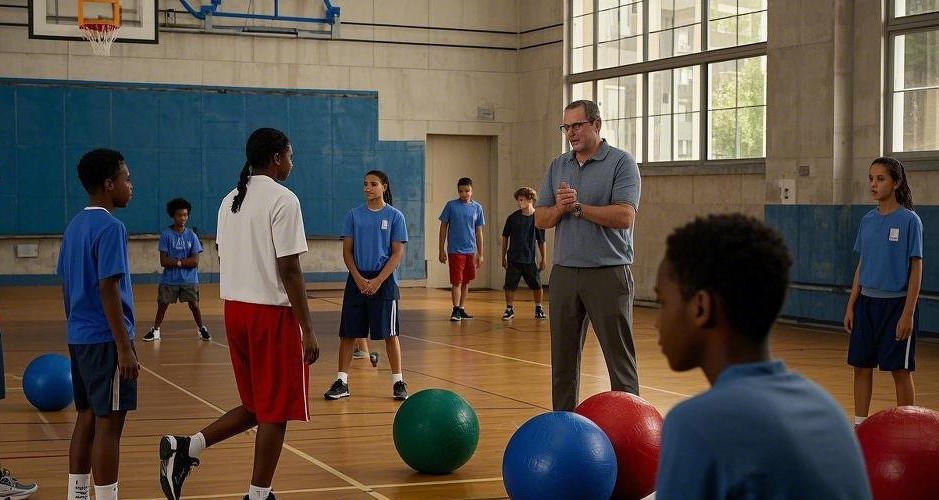For years, many of us in physical education have followed a model based
on the assumption that students will respond in predictable ways. Teach a
technique, expect improvement. Set up an activity, expect engagement.
Offer feedback, expect results.
But the truth is, students are not predictable. They come with a variety of
backgrounds, experiences, and attitudes toward sport. Some thrive on
competition, while others shrink from it. Some need structure, others
crave freedom. If we design our lessons based on an idealized, imaginary
student in mind, we risk overlooking the unique needs of those who might
benefit from PE the most.
This isn't about lowering expectations—it's about adjusting our
perspective. Just like a coach wouldn’t force every player into the same
position, we can’t expect every student to respond to the same approach.
It’s time we rethink how we design our PE programs
A Better Approach: Coaching the Students in Front of Us
The best coaches don’t force athletes into a rigid system—they build their
systems around the athletes. They recognize that each player comes with
different strengths and challenges, and real development happens when
the environment is flexible and supportive.
As PE teachers, we can take a similar approach. Rather than delivering a
fixed lesson with predetermined outcomes, we should create opportunities
that allow students to find success on their own terms. This requires:
Observing before prescribing: Take the time to watch how
students engage with the lesson before deciding what they need.
Are they struggling with a skill? Are they avoiding a certain activity?
These observations provide invaluable insight into how best to guide
them.
Focusing on adaptability: If something isn’t working, don’t blame
the student. Instead, look at the lesson. What can you change to
better meet their needs? A flexible lesson plan allows for
adjustments based on how students are responding.
Redefining success: Not every student will become an athlete, but
every student can learn to value movement and enjoy the process
of improving. Success should be defined by individual growth and
self-discovery, not just athletic achievement.
When we shift from delivering lessons to coaching individuals, PE
transforms from something students have to do into something
they want to do. When students feel seen and supported, their
engagement and motivation to learn are naturally boosted.
The Challenge: Who Are We Teaching?
It’s much easier to design learning experiences for the students we wish
we had—the ones who fit our preconceived ideas of what a “good”
student looks like. But this approach limits us. The real challenge lies in
creating an environment that meets the diverse needs of all our students,
not just the ones who fit the mold.
So, here’s the question we must ask ourselves: Are we shaping our PE
programs around the needs of our students, or are we trying to shape our
students to fit our programs?
True change in physical education begins when we stop expecting
students to adapt to us and start adapting to them. It’s time to stop
teaching to an imaginary student and start teaching to the students in
front of us.
Share this post
Get fresh insights and articles straight to your inbox
By subscribing you agree to our privacy policy.



Comments
You must be signed in to comment